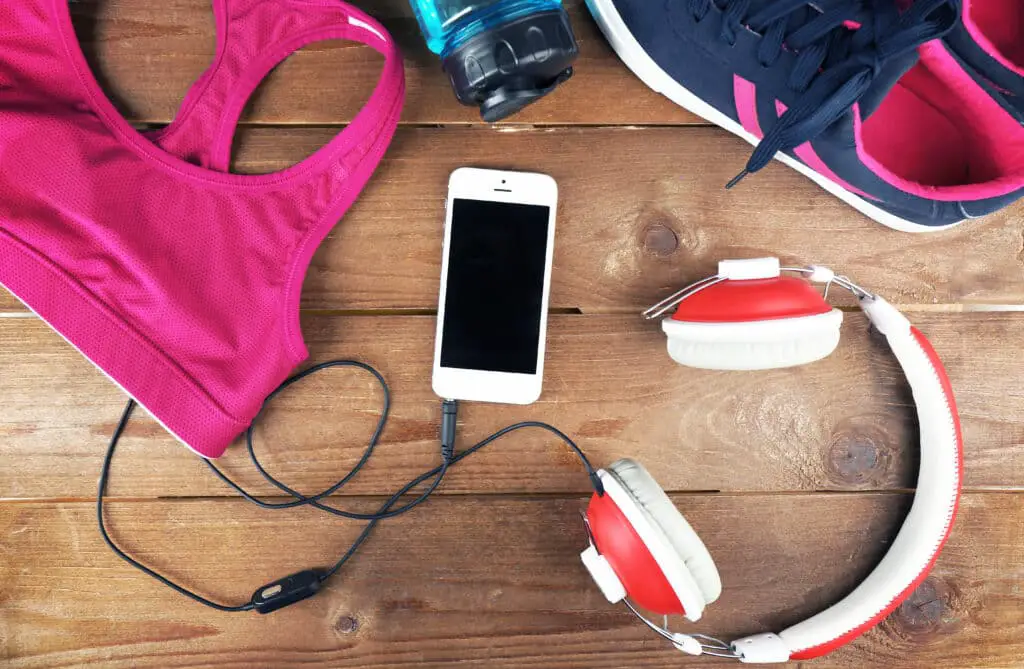Running gear and accessories play a crucial role in enhancing your overall running experience. Whether you are new and are about to start running or want to take your runs to the next level this article will help ensure a successful running journey. It is important to invest in the appropriate gear and accessories. In this comprehensive guide, we’ll delve into various aspects of running gear essentials that cater to both new and average runners.
To start, we’ll discuss the criteria for choosing running shoes and then move on to clothing basics such as shorts, tights, and reflective vests. Furthermore, we’ll explore the benefits and uses of heart rate monitors and GPS devices specifically designed for runners.
In addition to these fundamental items, we will also touch upon additional accessories like hats, glasses, belts, phone carriers – all aimed at maximizing comfort during long runs or providing extra support where needed. Lastly, after-run recovery tools will be discussed so you can bounce back quickly from intense workouts.
By understanding how each piece of running gear contributes towards a comfortable and efficient run session; you’re well on your way towards achieving those personal bests while enjoying every step of the process with your ideal set-up of running gear and accessories.
Quick Navigation
1. Running Shoes: What to Look For
Appropriate running shoes are essential for an enjoyable and safe running experience. With so many options available, finding the perfect pair that suits your needs can be overwhelming. This section will discuss some key features you should consider when selecting your ideal running shoes.
Finding Your Foot Type
Identifying your foot type is the initial step in locating a suitable running shoe. There are three main categories of foot types: neutral, overpronation (flat feet), and underpronation (high arches). To determine which category you fall into, try the wet test. Once you know your foot type, look for shoes designed specifically for that category.
Cushioning and Support
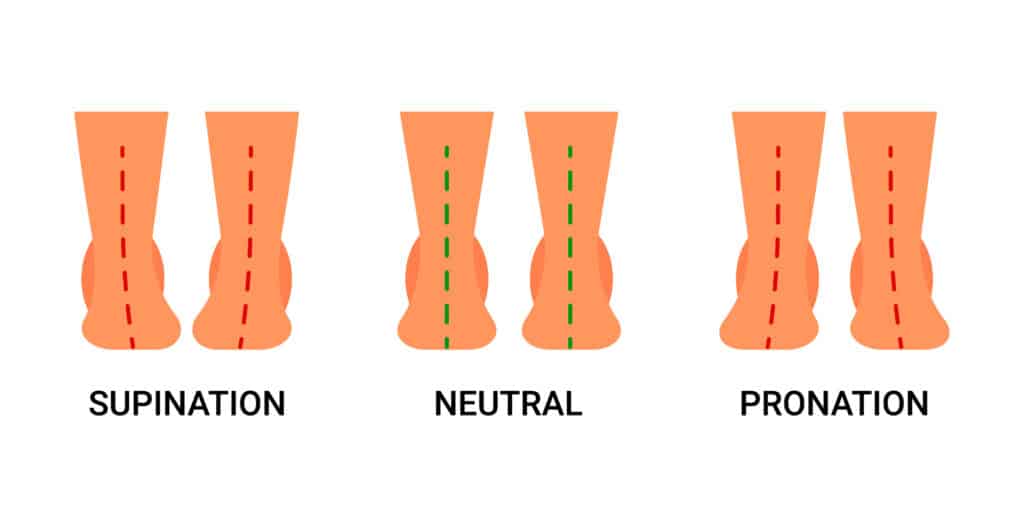
- Neutral runners: If you have a neutral stride, opt for shoes with moderate cushioning and support.
- Overpronators: Those with flat feet or low arches need more stability in their footwear. Choose motion control or stability shoes that provide extra support on the inner side of the shoe.
- Underpronators: High-arched runners require additional cushioning to absorb impact better during runs. Opt for well-cushioned neutral or flexible footwear.
Terrain Considerations
Your choice of running shoe also depends on where you plan to run most often – road surfaces or trails? Road-running shoes are lightweight and built primarily for pavement; they offer ample cushioning but may lack traction on off-road terrain. Trail-running shoes feature more aggressive outsoles for better grip on uneven surfaces and provide additional support to protect your feet from rocks and roots. Check out this guide to help you choose the right shoe based on terrain.
Finding the Perfect Fit
A well-fitting running shoe is essential for comfort and injury prevention. Keep these tips in mind when trying on shoes:
- Shop later in the day, as your feet tend to swell throughout the day.
- Wear socks that you typically use while running.
- Leave about a thumb’s width of space between your longest toe and the end of the shoe.
- Your heel should fit snugly without slipping during movement, but not too tight that it causes discomfort or blisters.
To ensure optimal performance and comfort, invest in running shoes that suit your individual needs and replace them regularly. Remember always to replace worn-out shoes every 300-500 miles or sooner if they show signs of wear or discomfort arises during runs.
2. Running Gear Essentials
Aside from running shoes, there are other running gear essentials that every runner should have. Here are some of the must-haves:
Running Shorts and Tights
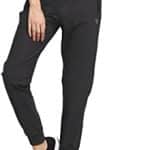 Running shorts and tights are designed to provide comfort and support during long runs. Look for shorts and tights made of moisture-wicking fabric that will keep you dry and comfortable. Running shorts should have a built-in liner for extra support, while tights should have a snug fit to prevent chafing.
Running shorts and tights are designed to provide comfort and support during long runs. Look for shorts and tights made of moisture-wicking fabric that will keep you dry and comfortable. Running shorts should have a built-in liner for extra support, while tights should have a snug fit to prevent chafing.
Reflective Gear
Reflective gear is essential for runners who prefer to run in low-light conditions. A reflective vest works well to make you visible to motorists, while reflective strips on your clothing and shoes can also help increase visibility.
Extra Support
Consider investing in compression sleeves or braces if you’re prone to injuries or need extra support during runs. These can help alleviate pain and support your joints and muscles.
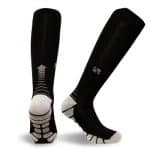 Overall, having the right running gear can significantly impact your running experience. Take the time to invest in quality gear that will provide comfort, support, and protection during your runs.
Overall, having the right running gear can significantly impact your running experience. Take the time to invest in quality gear that will provide comfort, support, and protection during your runs.
Finding the correct fit and design can drastically affect performance when selecting running shoes. When it comes to apparel for your jog, there are certain basics that you should think about obtaining.
Key Takeaway:
When it comes to running gear, finding the right shoes is crucial. Consider your foot type, cushioning and support needs, and terrain preferences when selecting a pair. Additionally, investing in other essentials like moisture-wicking shorts/tights, reflective gear for low-light conditions, and extra support (such as compression sleeves or braces) can greatly enhance your running experience.
2. Clothing Essentials for Runners
When it comes to running, having the right clothing can make a significant difference in your comfort and performance. Essential items to ensure a comfortable, safe, and successful running experience are listed below.
Socks: Choose Breathable Materials
High-quality running socks made from breathable materials like merino wool or synthetic blends are essential for keeping your feet dry and blister-free. Look for running-specific socks made from breathable materials like merino wool or synthetic blends that wick moisture away from your skin to prevent blisters and keep your feet dry.
Shorts and Pants: Opt for Comfortable Fit
Selecting shorts or pants designed specifically for running ensures they have features such as an elastic waistband, built-in briefs or liners, and pockets for storing essentials like keys or energy gels. When choosing between shorts or pants, consider factors such as weather conditions and personal preference. Many runners prefer wearing shorts during warmer months while opting for leggings or tights during colder seasons.
Shirts and Tops: Prioritize Moisture-Wicking Fabrics
When running, it is best to choose shirts and tops made of moisture-wicking fabrics that will draw sweat away from the body, allowing for a cool and dry exercise session. Avoid cotton shirts as they tend to retain moisture which can lead to chafing discomfort during long runs. Instead, look into options like polyester blends that provide both breathability and quick-drying capabilities.
- Men’s running shirts
- Women’s running tops
Reflective Gear: Stay Visible and Safe
If you’re planning to run in low-light conditions or at night, it’s crucial to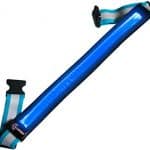 wear reflective gear that increases your visibility to motorists. Reflective vests, jackets, armbands, and even shoes can help ensure drivers see you clearly from a distance. Some runners also opt for clip-on LED lights as an additional safety measure.
wear reflective gear that increases your visibility to motorists. Reflective vests, jackets, armbands, and even shoes can help ensure drivers see you clearly from a distance. Some runners also opt for clip-on LED lights as an additional safety measure.
Layering for Cold Weather Running
In colder weather, layering is key to staying warm without overheating during your runs. Start with a moisture-wicking base layer followed by an insulating mid-layer such as fleece or down jacket depending on the temperature. Finish off with a windproof and water-resistant outer shell if needed. Don’t forget gloves and headwear like beanies or ear warmers.
Now that we’ve covered essential clothing items for runners, let’s move on to discuss how heart rate monitors and GPS devices can enhance your training experience.
Selecting the correct attire for running is essential to guarantee comfort and optimal performance; thus, it’s critical to select fabrics of superior quality that can endure. Moving on, heart rate monitors and GPS can provide a wealth of data about your runs, allowing you to track progress more accurately and make informed decisions when training.
Key Takeaway:
To have a comfortable and safe running experience, it is important to invest in high-quality socks made from breathable materials, shorts or pants designed specifically for running with an elastic waistband and pockets for storing essentials. Moisture-wicking fabrics are the best option for shirts and tops while reflective gear helps ensure visibility during low-light conditions. Layering is key to staying warm without overheating during cold weather runs.
3. Heart Rate Monitors and GPS: Benefits and Uses
Running is not just about putting on your shoes and hitting the pavement; it’s also about tracking your progress, setting goals, and improving your performance. This is where heart rate monitors (HRMs) and GPS devices come into play. These gadgets provide valuable data that can help you make informed decisions about your training regimen.
A. Understanding Heart Rate Monitors
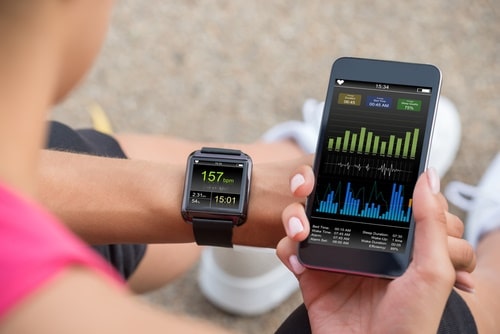
Heart rate monitors measure the number of times your heart beats per minute (BPM). By keeping track of this information during a run, you can ensure that you’re working within an appropriate intensity level for optimal results.
- Fat Burning Zone: Running at around 60-70% of your maximum heart rate helps improve endurance by burning fat as fuel.
- Aerobic Zone: Training in this zone (70-80% of max HR) improves cardiovascular fitness while still using oxygen efficiently.
- Anaerobic Zone: At around 80-90% of max HR, running becomes more intense with less reliance on oxygen to produce energy – ideal for interval training or tempo runs.
B. The Advantages of Using a GPS Device While Running
Incorporating a GPS device or watch into your routine offers several benefits beyond simply tracking distance traveled:
- Pace Monitoring – You’ll be able to see your current pace, allowing you to make adjustments as needed during your run.
- Route Mapping – GPS devices can map out the route you’ve taken, making it easy to analyze and share with friends or fellow runners.
- Elevation Data – Gain insight into how much elevation change occurred throughout your run, which is useful for training on hills or preparing for races with varying terrain.
C. Choosing the Right Device: HRM vs. GPS Watch
If you’re in the market for new running gear, consider whether an HRM alone will suffice or if investing in a GPS watch would be more beneficial. Some factors to keep in mind include:
- Budget – HRMs are generally less expensive than GPS watches; however, some models combine both features at a higher price point.
- Data Needs – If heart rate data is all that’s required for your training goals, an HRM may be sufficient. However, if tracking distance and other metrics like pace and elevation are important to you, then opting for a GPS watch might be worth the investment.
- Comfort & Convenience – Consider whether wearing a chest strap (commonly used with standalone HRMs) is comfortable enough during runs compared to wrist-based options found on most GPS watches.
Heart rate monitors and GPS can be invaluable tools for runners of all levels, providing real-time feedback on performance as well as tracking progress over time. As we move onto the next topic, let’s explore how hats, glasses, belts and phone carriers can help us make running even more enjoyable.
Key Takeaway:
Heart rate monitors and GPS devices are valuable tools for runners to track their progress, set goals, and improve performance. HRMs measure heartbeats per minute to ensure appropriate intensity levels while GPS devices offer pace monitoring, route mapping, and elevation data. Choosing the right device depends on budget, data needs, comfort, and convenience.
4. Running Hats, Glasses, Belts, and Phone Carriers
In this section, we’ll explore the different types of hats, glasses, belts, and phone carriers available to runners.
A. Running Hats: Protecting Your Head from the Elements
Running hats serve multiple purposes – they shield your eyes from the sun’s glare or raindrops while also helping to wick away sweat from your forehead. Look for lightweight materials like polyester or mesh that offer breathability and moisture-wicking properties. Some popular brands include Nike, Adidas, and Brooks Running.
B. Running Glasses: Keeping Your Eyes Safe on Sunny Days
Sunglasses specifically designed for running can help protect your eyes from harmful UV rays while reducing glare during sunny days or bright conditions. When choosing running glasses, look for features such as non-slip grips on the nose pads and temples as well as lenses with 100% UVA/UVB protection. Brands like Goodr Super Flys offer affordable options with these essential features.
C. Running Belts: Storing Essentials During Your Run
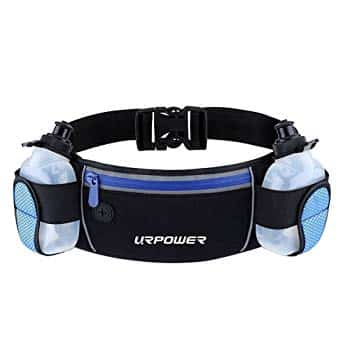
- Hip Belt: A hip belt is an adjustable strap worn around the waist that provides pockets for storing small items such as keys or energy gels. Check out the SPIbelt for a popular option.
- Hydration Belt: A hydration belt is similar to a hip belt but includes pockets or compartments specifically designed to hold water bottles, making it easier to stay hydrated during long runs. The Nathan Sports Hydration Belts offer various options with different capacities and features.
D. Phone Carriers: Keeping Your Smartphone Secure
If you like listening to music or tracking your run using an app on your smartphone, having a secure way of carrying it is essential. There are several types of phone carriers available:
- Armband: An armband wraps around your upper arm and securely holds your phone in place while running. Brands such as Quad Lock Armbands provide adjustable straps and easy access to the screen.
- Belt Clip: A belt clip attaches directly onto your waistband or running belt, keeping the phone within reach without bouncing around too much during runs. The TuneBelt Sport Belts have universal designs that can accommodate most smartphones.
- Pocket Integration: Certain running shorts, tights, or jackets come with built-in pockets specifically designed for holding phones securely in place during workouts – look for brands like Lululemon offering apparel with phone pockets.
Having the right running hats, glasses, belts and phone carriers can make a huge difference in your comfort while running. With these accessories properly fitted to you, it’s time to look into after-run recovery tools that will help keep you healthy and injury free.
Key Takeaway:
This section explores the essential running accessories, including hats that protect your head from elements and wick away sweat, glasses that keep your eyes safe on sunny days with non-slip grips and 100% UVA/UVB protection lenses. It also covers different types of belts for storing small items or water bottles while running and phone carriers such as armbands, belt clips, or pocket integration to securely hold smartphones during workouts.
5. After-Run Accessories: Recovery Tools
Recovering following a run is just as essential as the actual exercise, and having the correct tools can help keep you free from harm while improving your general execution. In this section, we will discuss some essential recovery tools that every runner should consider adding to their gear collection.
Foam Rollers
Foam rollers are an excellent tool for post-run muscle recovery. They help release tightness in muscles, reduce inflammation, and increase blood flow by applying pressure on specific areas of your body. Foam rollers can be used regularly to help ward off any potential harm resulting from muscular imbalances or overuse.
Compression Socks or Sleeves
Compression socks or sleeves provide support to your calves and shins while promoting better circulation during and after running. This helps alleviate soreness, reduces swelling, and speeds up recovery time between runs.
Tips for Choosing Compression Gear:
- Pick the correct size based on calf circumference measurement;
- Select graduated compression levels (higher at ankle area);
- Aim for moisture-wicking materials like nylon or spandex;
- If unsure about which brand to choose from, read reviews from fellow runners online before purchasing.
Epsom Salt Baths
An Epsom salt bath is another great way to relax tired muscles after a long run. The magnesium sulfate in Epsom salt helps reduce inflammation and muscle soreness, while the warm water can help improve circulation. For a soothing soak, just add two cups of Epsom salt to your tub and stay in for around fifteen to twenty minutes.
Massage Balls
Massage balls, also known as trigger point therapy balls, are another excellent tool for targeting specific areas of tightness or discomfort after running. They work by applying focused pressure on knots or trigger points in muscles, helping release tension and promote relaxation.
Tips for Using Massage Balls:
- Select a ball with an appropriate size and firmness level;
- Use it against a wall or floor to control the amount of pressure applied;
- Spend at least one minute per area working out any knots or tight spots;
- Avoid pressing directly on joints, bones, or sensitive areas like the spine.
Incorporating these recovery tools into your post-run routine will not only aid in preventing injuries but also enhance overall performance during future runs. Remember that proper recovery is just as crucial as training itself when striving towards becoming a better runner.
Key Takeaway:
After a run, recovery is important and having the right tools can help prevent injuries and improve performance. Essential recovery tools include foam rollers for muscle release, compression socks or sleeves for better circulation, Epsom salt baths to reduce inflammation and massage balls for targeted pressure on knots in muscles.
FAQs in Relation to Running Gear and Accessories; What We Need and Want
Why is Running Gear Important?
Running gear enhances performance, provides comfort, and prevents injuries. Quality shoes offer support and cushioning to reduce impact on joints, while moisture-wicking clothing helps regulate body temperature. Accessories like heart rate monitors and GPS devices enable runners to track progress and optimize training.
What is the Most Important Piece of Running Gear?
![]()
The most crucial piece of running gear is a pair of well-fitting running shoes. They provide necessary support, cushioning, and stability for your feet during runs. Investing in quality footwear can help prevent injuries such as shin splints or plantar fasciitis.
What Do Runners Need to Wear?
Runners should wear comfortable clothing made from moisture-wicking materials that keep them dry during workouts. Essential items include a lightweight shirt or tank top, shorts or leggings, socks designed for running, sports bras (for women), compression garments (optional), and weather-appropriate outerwear like jackets or hats.
What Facilities and Equipment are Needed for Running?
For casual outdoor runs, no specific facilities are required other than safe routes with minimal traffic hazards. For competitive events or specialized training sessions, access to tracks or treadmills may be beneficial. Equipment needs include proper footwear, appropriate attire based on climate conditions, hydration systems if necessary, plus any desired tracking devices.
Conclusion
In conclusion, having the right running gear and accessories can make all the difference in your performance and overall enjoyment of running. It’s important to invest in quality running shoes that fit well, comfortable clothing for various weather conditions, heart rate monitors, and GPS devices to track progress, and other accessories like hats, glasses, belts, and phone carriers.
Additionally, recovery tools such as foam rollers or massage balls can aid in preventing injuries and improving post-run recovery time. By prioritizing these essentials for runners, you’ll be able to improve your experience while minimizing any discomfort or injury risks.
If you’re looking for more tips on how to enhance your running journey with proper gear and training techniques, then check out The Runners Base. They have a wealth of information from experienced runners that will help guide you towards achieving your goals

